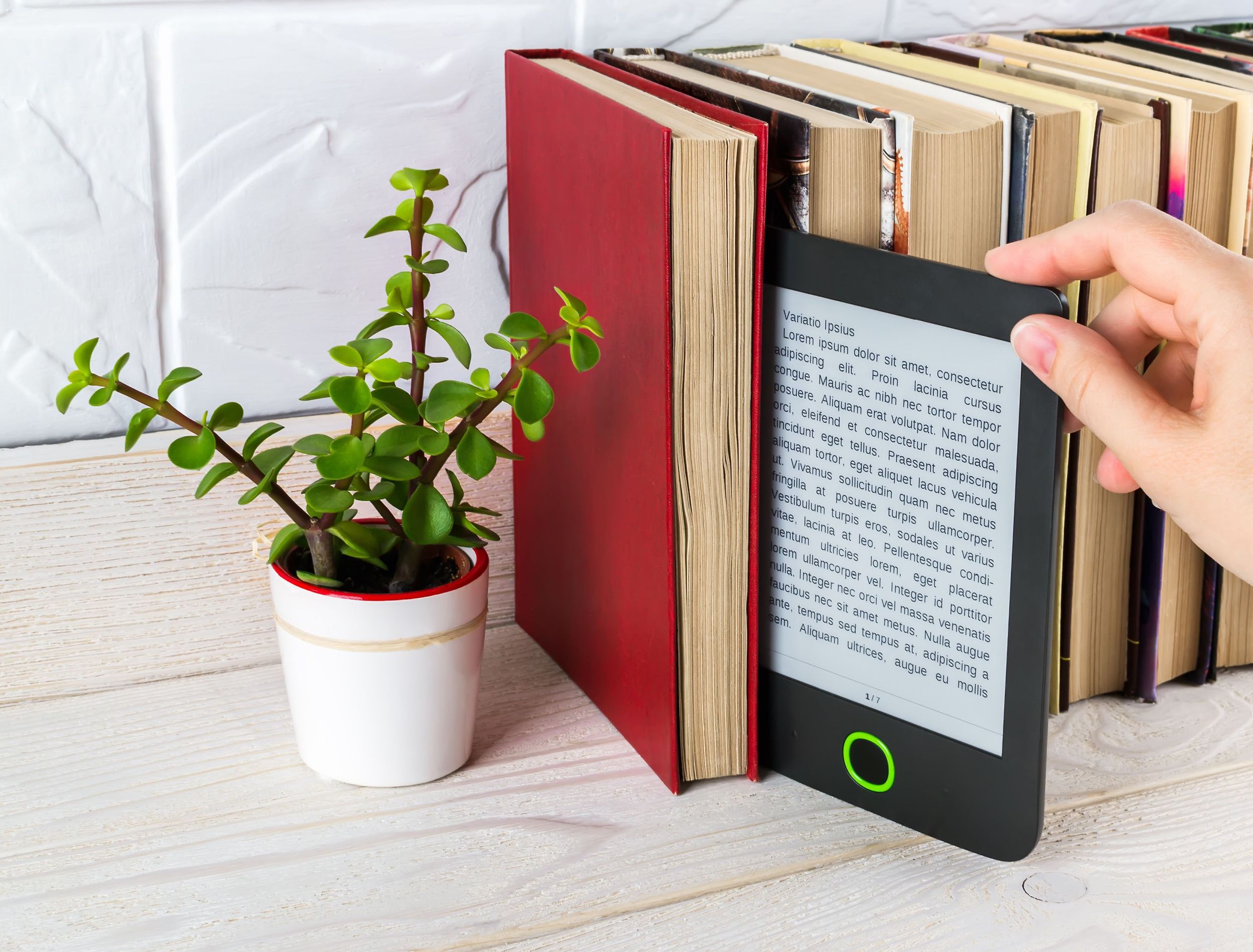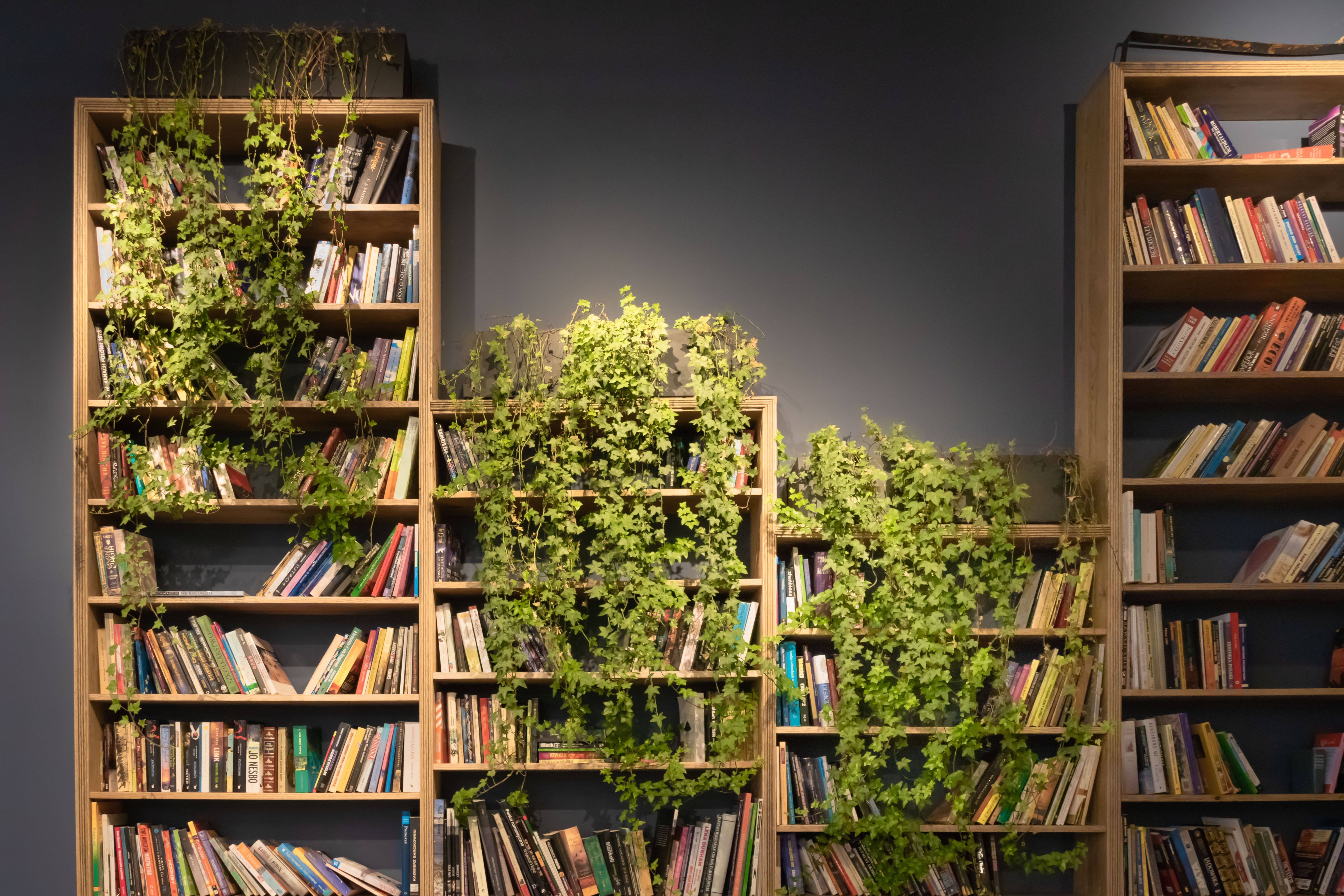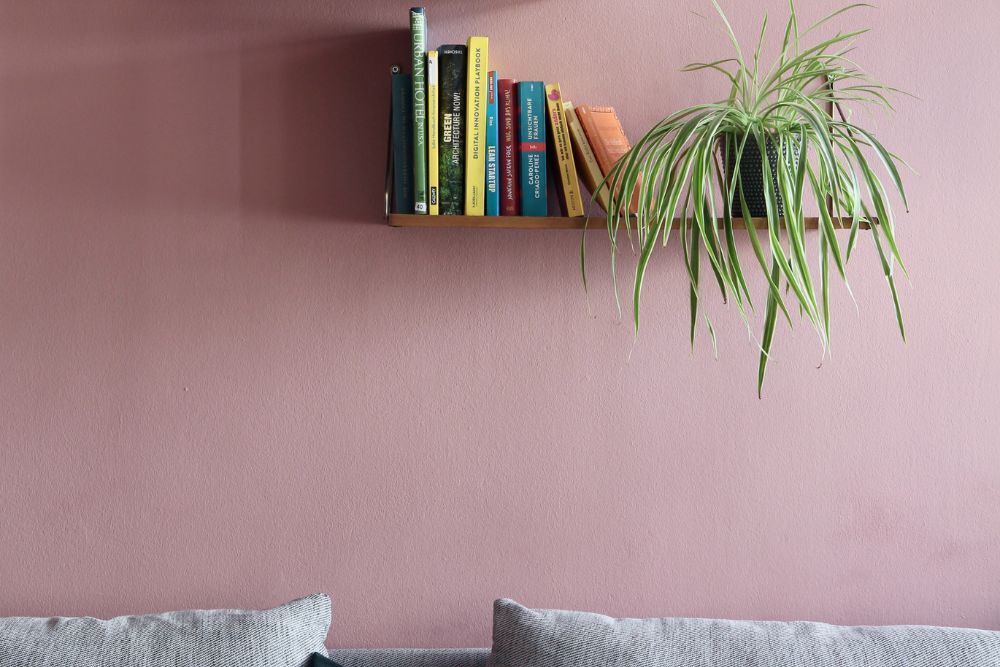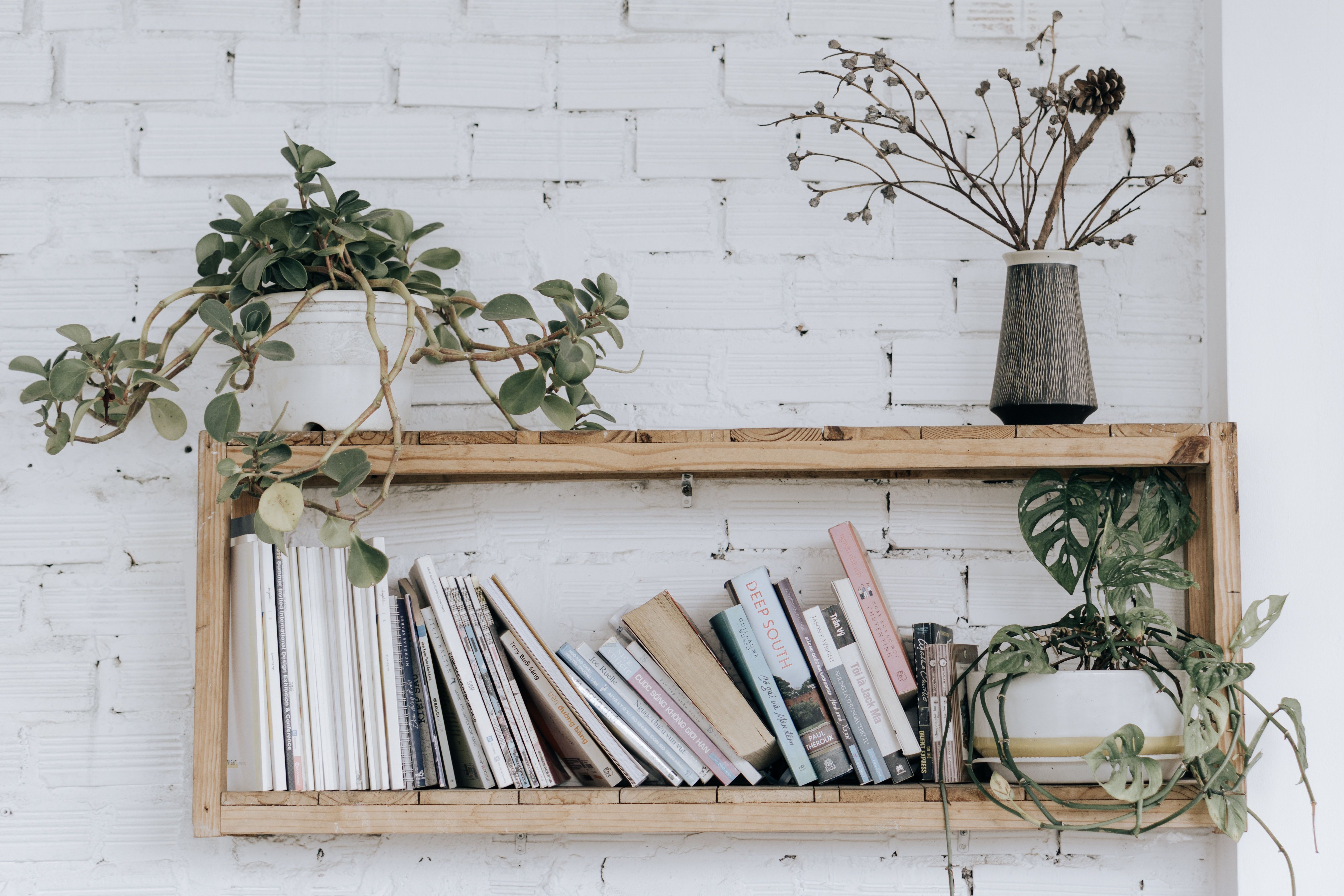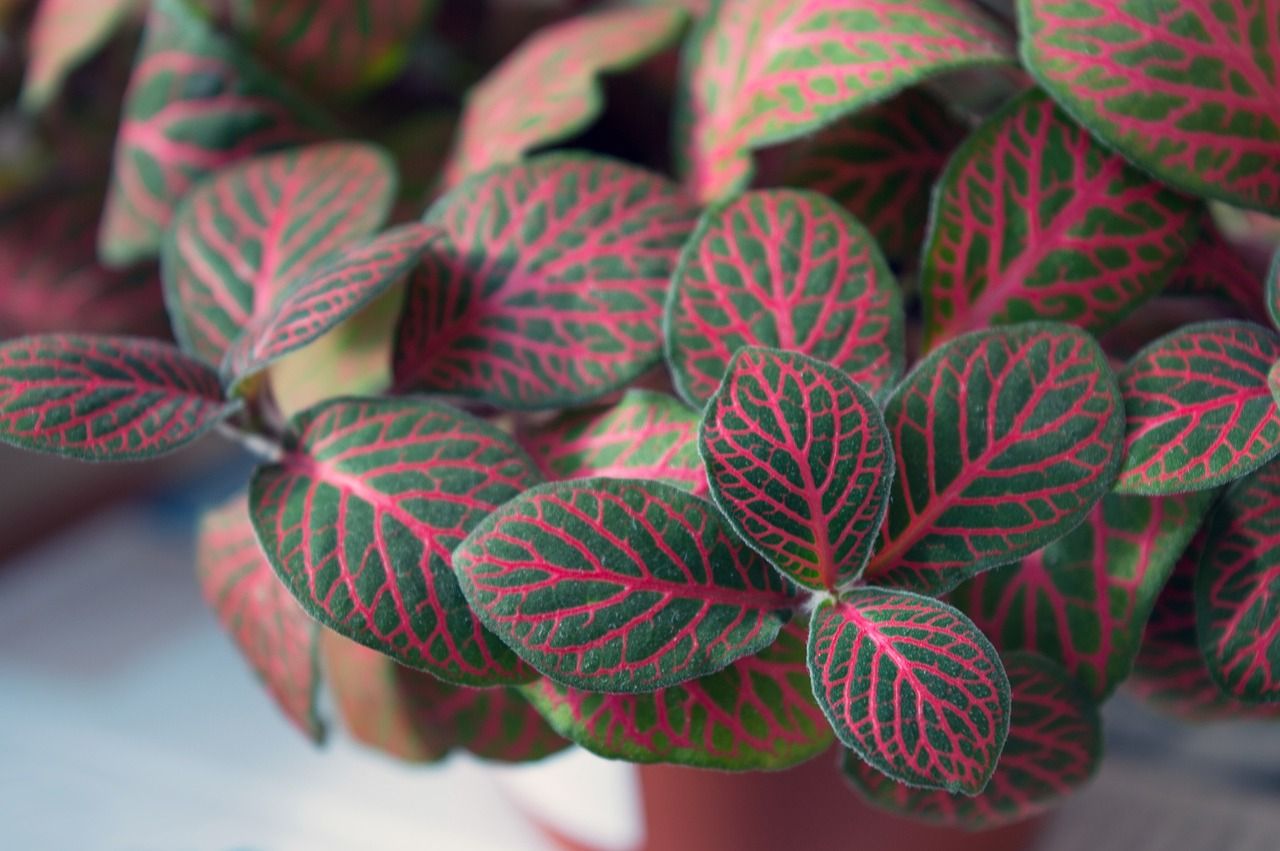There's nothing more inviting than reaching for your favorite book and seeing beautiful plants on the bookshelf. Indoor potted plants placed on shelves can dramatically frame your book collection by adding ornamental greenery and breaking up the monotony of an endless series of books. The right plant can bring flair and style to an otherwise simple piece of furniture.
Learn below everything about some plants perfect for displaying on bookshelves and discover tips on caring for them.
English Ivy
Image credits: Pawel Czerwinski via Unsplash
The first option on the list is English ivy. This vining plant has foliage that can cover a brick wall or fence, so why not have one cascading over your bookshelf? This plant will thank you with beautiful flowers if you take good care of it.
Water your plant only when the top ½ inch of the soil becomes dry. Remove the plant from your bookshelf and carefully place it in a sink or bathtub to water. This way, you protect your books from excess water residue. Remember to drain any excess water if you have a saucer or plate under your plant.
Placing your ivy near filtered light will help it flourish. That said, English ivy is quite tolerant of many lighting conditions, including artificial lighting. To feed your plant, use a fertilizer high in nitrogen and apply it to the soil every month during active growth.
English ivy is prone to spider mites. You'll know you have a problem with these critters when you see yellow spots on the stem base of your plant. You can use simple DIY solutions to get rid of these pests.
Note: English ivy is also poisonous to cats and dogs due to saponins, which can cause gastrointestinal problems in your pets.
Spider Plant
Image credits: Beazy via Unsplash
If you have space at home, opt for a ladder shelf and a spider plant! This plant is a popular choice for beginner gardeners because it's low-maintenance in care. Spider plants have variegated leaves with white and yellow running down the middle, making them a striking addition to bookshelves.
These plants prefer bright indirect light, as placing them in direct light can damage the leaves. They thrive with an average indoor humidity level of around 50 percent and an ideal temperature of 60 to 75 degrees Fahrenheit.
Spider plants need regular watering and like a well-drained general potting soil. Avoid using tap water, as these plants are finicky with the fluoride and chlorine levels. Water only when the soil is dry to the touch. They'll usually need water weekly during the summer and less often during the winter. Overwatering your plants is the leading cause of root rot.
Pro Tip: These plants act as indoor cleaners by absorbing chemical toxins such as formaldehyde, xylene, benzene, and carbon monoxide. They are also non-toxic to cats and dogs.
Jade Plant
Image credits: hannin tran nguyen via Pexels
The jade plant (Crassula ovata) is the perfect little plant for your bookshelf. The plant presents with glossy, oval-shaped leaves and gnarled trunks.
This succulent stores water in its leaves, stem, and roots, so it's perfect for you if you don't like watering. Allow soil to dry out completely before watering it with tepid filtered or distilled water. Make sure the excess water runs through the bottom of your pot. Do not overwater, as this will cause leaves to fall off, and root rot may occur. Restrict watering in the wintertime, as the plant becomes dormant.
Jades like four or more hours of direct sun daily, so place them in a bright area of the bookshelf near a window. They can, however, survive in bright indirect light. If your jade plant is growing deep, green leaves and its stems are drooping, it may need more light.
Nerve Plant
Image credits: Akuptsova via Pixabay
The nerve plant (Fittonia albivenis) is a small plant that belongs on your bookshelf. The foliage on these plants is stunning; the veins on the leaves come in various colors, including red, pink, and white.
Native to tropical rainforests in parts of South America, these are easy-to-care-for plants. They thrive in bright, indirect sunlight but will suffer in direct sun. Dry air and drafts will cause the leaves to wilt and fall.
Add a couple of these beauties to your shelves; they only reach a height of 3 to 8 inches and 6 inches to 1 foot 6 inches in spread. The ideal indoor temperature is anything above 55 degrees Fahrenheit.
These humidity-loving plants need watering at least twice a week. Without water for a few days, their leaves quickly droop. Nerve plants are prone to mealybugs, scales, and spider mites.
Good news for pet parents! These plants are non-toxic and safe for cats and dogs.
Books and Plants Go Together
Who says you can't choose a novel and a plant at the same time? Houseplants and reading complement each other in beautiful ways. Planning is beneficial when deciding which plant to proudly show off on your bookshelf. Consider the location, size, and weight of your bookcase and plants. Once you've considered all this, you're off to the races!
Will you try decorating your bookshelf with any of these plants?
If you have any tips or tricks to share, please leave them in the comment field.

